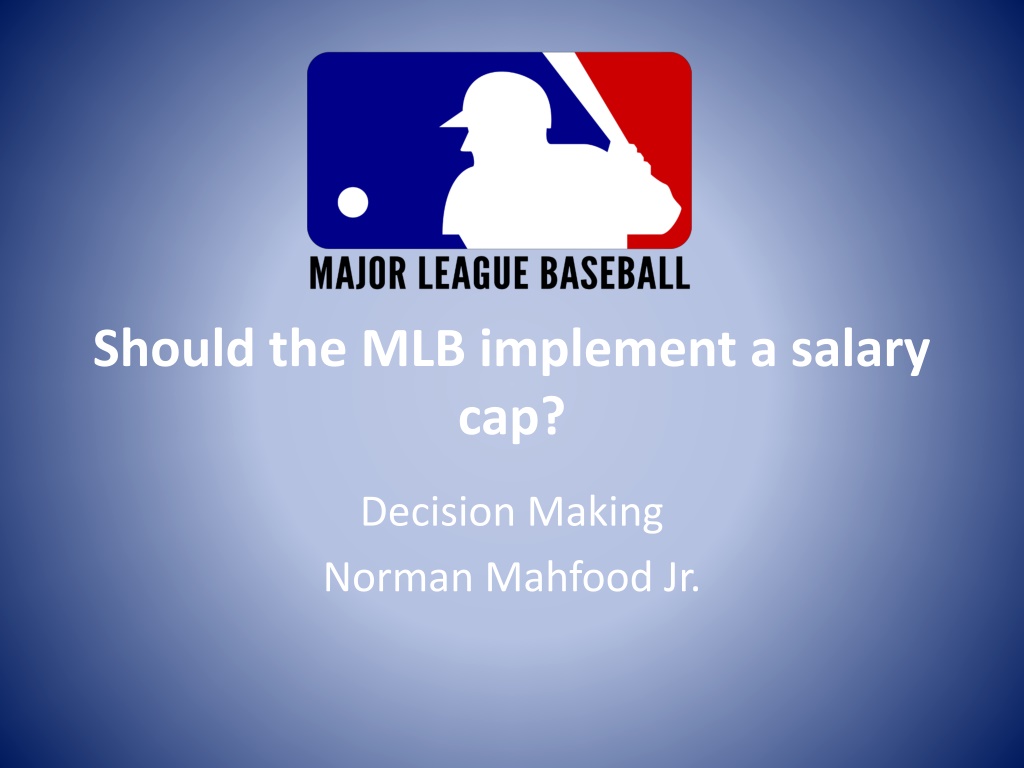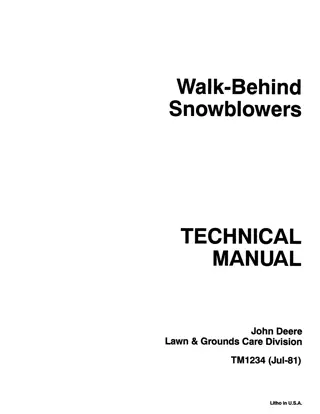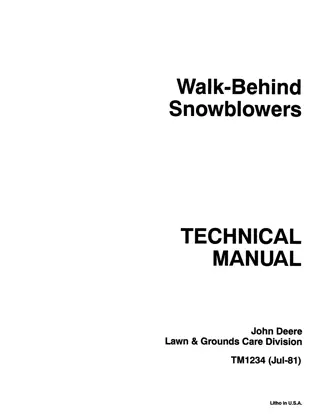
MLB Salary Cap Decision: Impact on Revenues and Competitive Balance
Explore the potential implementation of a salary cap in MLB, its impact on team competition, fan engagement, and revenue generation. Evaluate the alternatives and criteria to determine the best approach for the league's growth.
Download Presentation

Please find below an Image/Link to download the presentation.
The content on the website is provided AS IS for your information and personal use only. It may not be sold, licensed, or shared on other websites without obtaining consent from the author. Download presentation by click this link. If you encounter any issues during the download, it is possible that the publisher has removed the file from their server.
E N D
Presentation Transcript
Should the MLB implement a salary cap? Decision Making Norman Mahfood Jr.
The Decision Current Rules No Salary Cap Other possibilities High-level Salary Cap Mid-level Salary Cap Low-level Salary Cap Rationale Teams with higher payroll win majority of time. Ratings dipping and fans in smaller markets not as interested. MLB wants to grow and expand its fan base.
Criteria MLB Revenue Would more teams having a chance of winning the World Series lead to higher revenues? Would the lower salary costs outweigh the risks? Fan Support Would the fans be more interested in the sport if more teams had potential chances to win? Would the enhanced competitive balance lead to higher ratings and growth in smaller and new markets? MLB Media Coverage- Will the MLB receive more media coverage and better ratings given the increased competitive balance of the league. Players Union- What is the response of the MLB Players Union to any proposed salary cap? Will there be a strike if cap is imposed?
Subnets The standard benefits, opportunities, costs, and risks criteria were used. These criteria were judged accordingly with regards to the players, the MLB and fans of the MLB
Subnets Contd Opportunity criteria for the MLB included higher revenues, less salary costs, and new market growth stemming from increased competitive balance across the league. This set of criteria was the most influential in the decision made by the model.
The Alternatives Option 1 Keep the existing rules where there is no salary cap. Option 2 Implement a high-level salary cap. Option 3 Implement a mid-level salary cap. Option 4 Implement a low-level salary cap.
The Ratings The benefits of implementing a salary cap carry the most weight. This is due to the probability of increased revenue for the MLB. The Opportunity of implementing a salary cap is the second most important factor due to opportunity at higher exposure and new market growth.
Benefits : Mid-level salary cap Produces most benefits Players Better chance at winning championships. MLB Competitive Balance Higher Revenue Fans More competitive balance Increased interest
Opportunities Mid-level salary cap is the best option for opportunities. MLB Market Growth Revenues Players More exposure Better championship chances. Fans More parity Better on field product.
Costs Low-level salary cap has highest costs MLB Increased revenue share for players. Players Lower salaries
Risks Low-level salary cap has highest risks. Players Salary cuts Strike possibility Replaced by cheaper players MLB Player s strike Loss of interest in already large markets. Upset current fan base Fans Strike Loss of favorite players
Overall Results The Multiplicative formula shows that a high or mid cap would have a positive effect. The ideal situation for our model is an mid-level cap.
Results Contd The Additive formula puts more emphasis on the high risk factor. The results are wider and show that a mid-level cap is the clear best option.
BOCR Sensitivity Benefits Opportunities
BOCR Sensitivity Costs Risks
References https://en.wikipedia.org/wiki/List_of_World_Series_champio ns http://www.usatoday.com/sports/mlb/salaries/2016/team/all /






